Mainflingen cross dipole
|
||||
MW Mainflingen cross dipole antenna- Insulator termination for cable at the top of the central mast
|
||
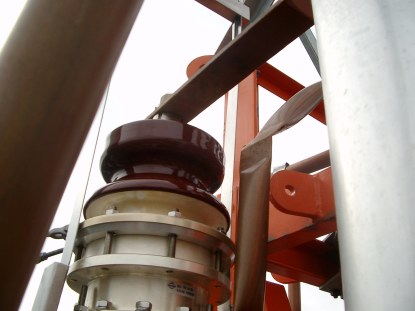 |
The insulator termination for the power cable at the top of the central mast
The inner conductor of the cable is connected to one side, the outer conductor to the other side of the dipole. A stub as decribed on page 4E is in parallel to this feeding point. Since we have two dipoles and the connecting lines must be of the same length, a rather sophisticated line construction was necessary for having sufficient spacing between the lines.
On the very right of the photo the rigid tubular line as part of the stub can be seen.
|
|
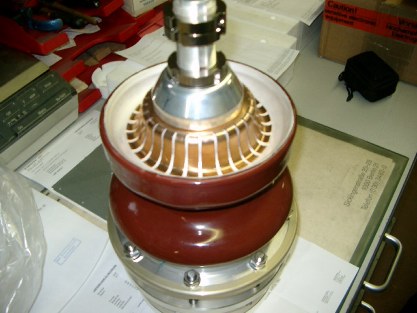 |
Insulator termination for the power cable
The insulator for the cable termination still on the desk in Berlin- Spandau for examination.
|
|
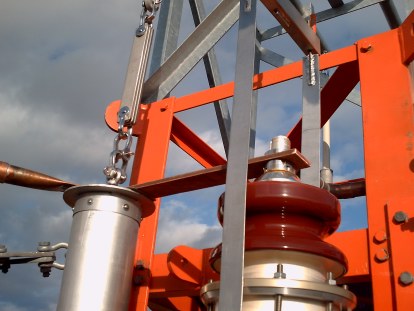 |
The stub: the inner conductor of the cable is connected to the tube.
The copper pipe on the left side of the photo, which is fixed to the tube, connects one side of the dipole to the inner conductor of the cable.
|
|
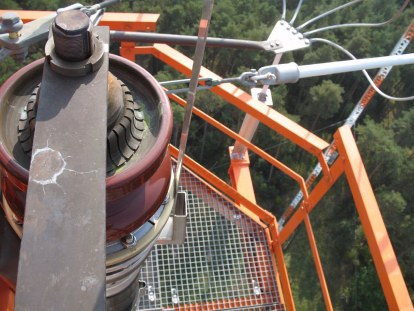 |
The cable termination and the connection to the tube of the stub.
Foto: T-Systems
|
|
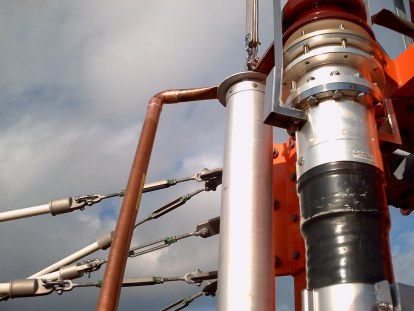 |
The stub: the inner conductor of the cable is connected to the tube.
The copper pipe on the left side of the photo, which is fixed to the tube, connects one side of the dipole to the inner conductor of the cable.
In the back the insulators of the dipole ropes.
|
|
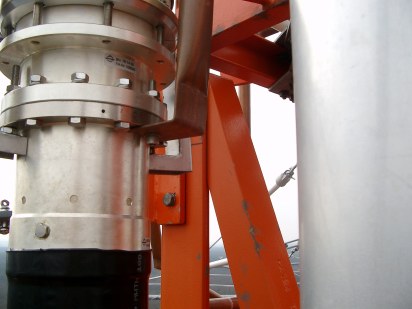 |
The outer conductor of the cable is connected to the other side of the dipole.
|
|
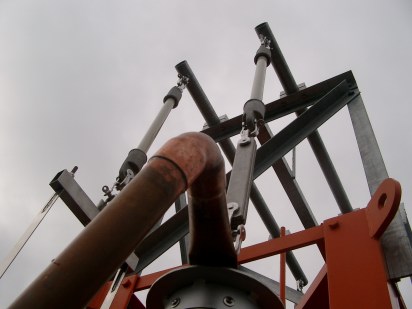 |
The cable and the tube are suspended by means of rod insulators.
|
|
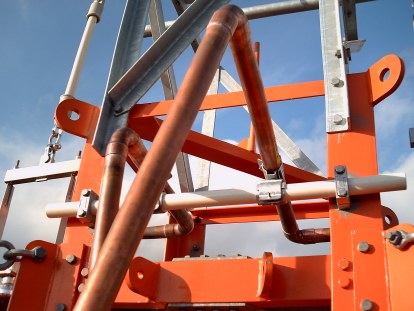 |
Confusing pipe connections, which connect the feeding cables with both sides of the dipoles.
|
|
previous next
|
Mainflingen cross dipole
|
|
Visitor's statistics:
|
|
now online
|
The flags of the visitors from all over the world
(since 2009-1-18) :
The visitors from the USA and their flags of 50 federal states + DC
(since 2010-3-21):
The visitors from Canada and their flags of 13 provinces & territories
(since 2010-4-24)
|
since 2010-6-27
|
|